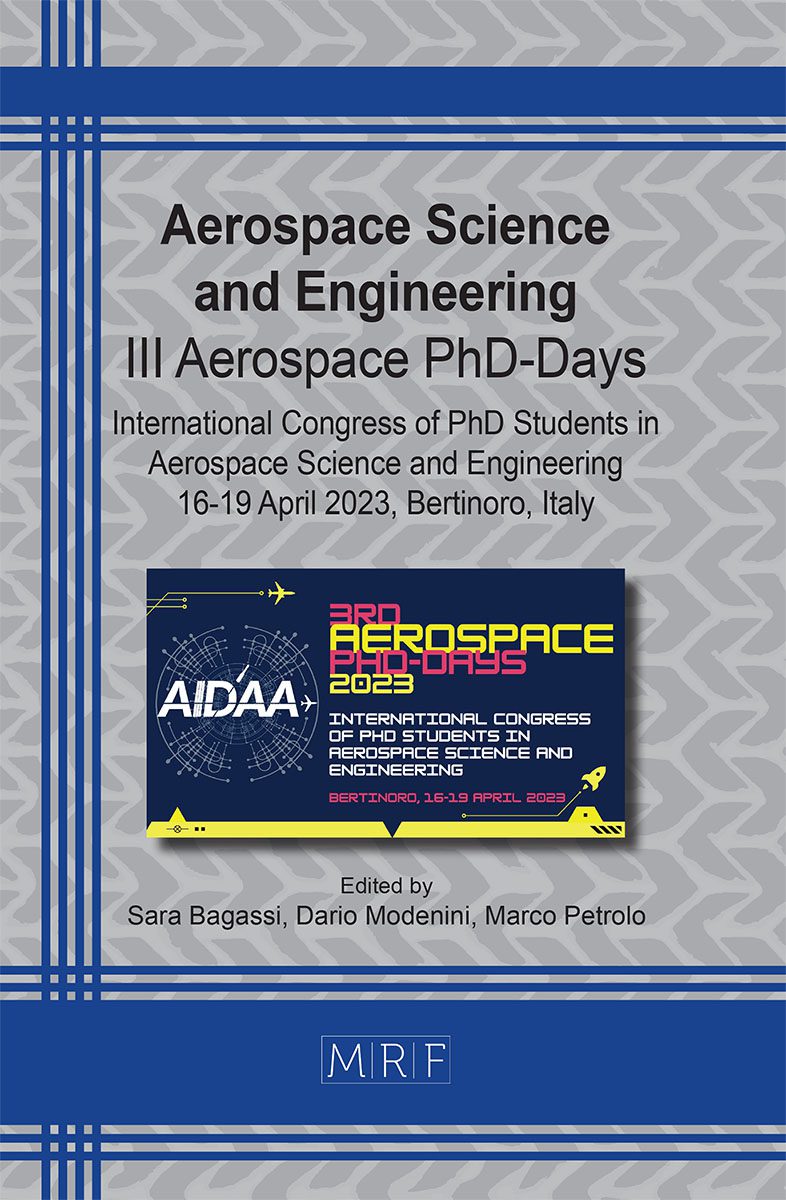Simulations of vertical sloshing in a partially filled rectangular tank subjected to time-periodic excitation
Daniele Rossi
download PDFAbstract. An in-house Navier-Stokes multiphase VOF (Volume-Of-Fluid) solver is used to study sloshing phenomena in a partially filled rectangular tank subjected to vertical sinusoidal excitation. The flow dynamics is found to be significantly affected by vertical acceleration and forcing frequency. Specifically, when the acceleration is strong and the excitation frequency is low, the flow exhibits a more chaotic and three-dimensional nature. Consequently, certain properties such as the energy dissipation and the mixing efficiency of the system are poorly predicted by two-dimensional simulations in that range of parameters, making more expensive three-dimensional simulations necessary. The time history of the sloshing force and instantaneous flow visualizations are used to analyze the effects of liquid impacting on the walls on energy exchanges between the fluid and the tank. Finally, the evolution of mixing efficiency and its influence on the energy losses are discussed.
Keywords
Sloshing, Multiphase Flows, VOF Solver, Energy Dissipation
Published online 9/1/2023, 8 pages
Copyright © 2023 by the author(s)
Published under license by Materials Research Forum LLC., Millersville PA, USA
Citation: Daniele Rossi, Simulations of vertical sloshing in a partially filled rectangular tank subjected to time-periodic excitation, Materials Research Proceedings, Vol. 33, pp 269-276, 2023
DOI: https://doi.org/10.21741/9781644902677-39
The article was published as article 39 of the book Aerospace Science and Engineering
![]() Content from this work may be used under the terms of the Creative Commons Attribution 3.0 license. Any further distribution of this work must maintain attribution to the author(s) and the title of the work, journal citation and DOI.
Content from this work may be used under the terms of the Creative Commons Attribution 3.0 license. Any further distribution of this work must maintain attribution to the author(s) and the title of the work, journal citation and DOI.
References
[1] Saltari, F., Pizzoli, M., Coppotelli, G., Gambioli, F., Cooper, J.E., Mastroddi, F., 2022a. Experimental characterisation of sloshing tank dissipative behaviour in vertical harmonic excitation. J. Fluids Struct. 109, 103478. https://doi.org/10.1016/j.jfluidstructs.2021.103478
[2] Faltinsen, O., 2017. Sloshing. Adv. Mech. .
[3] Titurus, B., Cooper, J.E., Saltari, F., Mastroddi, F., Gambioli, F., 2019. Analysis of a sloshing beam experiment, in: Proceedings of the International Forum on Aeroelasticity and Structural Dynamics, Savannah, GA, USA, pp. 10–13
[4] Calderon-Sanchez, J., Martinez-Carrascal, J., Gonzalez-Gutierrez, L.M., Colagrossi, A., 2021. A global analysis of a coupled violent vertical sloshing problem using an sph methodology. Eng. Appl. Comput. Fluid Mech. 15, 865–888. https://doi.org/10.1080/19942060.2021.1921849
[5] De Courcy, J.J., Constantin, L., Titurus, B., Rendall, T., Cooper, J.E., 2021. Gust loads alleviation using sloshing fuel, in: AIAA Scitech 2021 Forum, p. 1152. https://doi.org/10.2514/6.2021-1152
[6] Pizzoli, M., Saltari, F., Mastroddi, F., Martinez-Carrascal, J., González-Gutiérrez, L.M., 2022b. Nonlinear reduced-order model for vertical sloshing by employing neural networks. Nonlinear Dyn. 107, 1469– 1478. https://doi.org/10.1007/s11071-021-06668-w
[7] Saltari, F., Pizzoli, M., Gambioli, F., Jetzschmann, C., Mastroddi, F., 2022b. Sloshing reduced-order model based on neural networks for aeroelastic analyses. Aerosp. Sci. Technol. 127, 107708. https://doi.org/10.1016/j.ast.2022.107708
[8] Pizzoli, M., Saltari, F., Coppotelli, G., Mastroddi, F., 2022a. Experimental validation of neural-network-based nonlinear reduced-order model for vertical sloshing, in: AIAA Scitech 2022 Forum, p. 1186. https://doi.org/10.2514/6.2022-1186
[9] Antuono, M., Bouscasse, B., Colagrossi, A., Lugni, C., 2012. Two-dimensional modal method for shallow-water sloshing in rectangular basins. J. Fluid Mech. 700, 419–440. https://doi.org/10.1017/jfm.2012.140
[10] Demirbilek, Z., 1983. Energy dissipation in sloshing waves in a rolling rectangular tank — iii. results and applications. Ocean Eng. 10, 375– 382. https://doi.org/10.1016/0029-8018(83)90006-9
[11] Hirt, C.W., Nichols, B.D., 1981. Volume of fluid (VOF) method for the dynamics of free boundaries. J. Comput. Phys. 39, 201–225. https://doi.org/10.1016/0021-9991(81)90145-5
[12] Sussman, M., Fatemi, E., Smereka, P., Osher, S., 1998. An improved level set method for incompressible two-phase flows. Comput. Fluids 27, 663– 680. https://doi.org/10.1016/S0045-7930(97)00053-4
[13] Gimenez, J.M., González, L.M., 2015. An extended validation of the last generation of particle finite element method for free surface flows. J. Comput. Phys. 284, 186–205. https://doi.org/10.1016/j.jcp.2014.12.025
[14] Li, J., Hamamoto, Y., Liu, Y., Zhang, X., 2014. Sloshing impact simulation with material point method and its experimental validations. Comput. Fluids 103, 86–99. https://doi.org/10.1016/j.compfluid.2014.07.025
[15] Colagrossi, A., Landrini, M., 2003. Numerical simulation of interfacial flows by smoothed particle hydrodynamics. J. Comput. Phys. 191, 448– 475. https://doi.org/10.1016/S0021-9991(03)00324-3
[16] Banim, R., Lamb, R., Bergeon, M., 2006. Smoothed particle hydrodynamics simulation of fuel tank sloshing. Proceedings 25th international congress of the aeronautical sciences .
[17] Tryggvason, G., Scardovelli, R., Zaleski, S., 2011. Direct Numerical Simulations of Gas-Liquid Multiphase Flows. Cambridge University Press.
[18] Orlandi, P., 2012. Fluid flow phenomena: a numerical toolkit. volume 55. Springer Science & Business Media.
[19] Pirozzoli, S., Di Giorgio, S., Iafrati, A., 2019. On algebraic TVD-VOF methods for tracking material interfaces. Comput. Fluids 189, 73–81. https://doi.org/10.1016/j.compfluid.2019.05.013
[20] Popinet, S., 2009. An accurate adaptive solver for surface-tension-driven interfacial flows. J. Comput. Phys. 228, 5838–5866. https://doi.org/10.1016/j.jcp.2009.04.042
[21] Harlow, F.H., Welch, J.E., 1965. Numerical calculation of time-dependent viscous incompressible flow of fluid with free surface. Phys. Fluids 8, 2182–2189. https://doi.org/10.1063/1.1761178
[22] Falgout, R.D., Yang, U.M., 2002. hypre: A Library of High Performance Preconditioners, in: International Conference on computational science, pp. 632–641. https://doi.org/10.1007/3-540-47789-6_66
[23] Brackbill, J.U., Kothe, D.B., Zemach, C., 1992. A continuum method for modeling surface tension. J. Comput. Phys. 100, 335–354. https://doi.org/10.1016/0021-9991(92)90240-Y
[24] Cummins, S.J., Francois, M.M., Kothe, D.B., 2005. Estimating curvature from volume fractions. Comput. Struct. 83, 425–434. https://doi.org/10.1016/j.compstruc.2004.08.017
[25] Francois, M.M., Cummins, S.J., Dendy, E.D., Kothe, D.B., Sicilian, J.M., Williams, M.W., 2006. A balanced-force algorithm for continuous and sharp interfacial surface tension models within a volume tracking framework. J. Comput. Phys. 213, 141–173. https://doi.org/10.1016/j.jcp.2005.08.004
[26] Di Giorgio, S., Pirozzoli, S., Iafrati, A., 2022. On coherent vortical structures in wave breaking. J. Fluid Mech. 947, A44. https://doi.org/10.1017/jfm.2022.674
[27] Marrone, S., Colagrossi, A., Di Mascio, A., Le Touzé, D., 2015. Prediction of energy losses in water impacts using incompressible and weakly compressible models. J. Fluids Struct. 54, 802–822. https://doi.org/10.1016/j.jfluidstructs.2015.01.014
/












